Handwashing
Because you touch and handle many objects in your daily life, your hands can come into contact with microorganisms such as bacteria and viruses that cause infections (e.g., flu, cold, gastroenteritis). Germs are transmitted through direct contact with people (e.g., handshakes) and contaminated objects (e.g., telephones, door handles, faucets).
These microorganisms end up on surfaces when a person coughs or sneezes, causing microdroplets to be projected into the air and onto objects. When you touch these contaminated surfaces and then touch your face, you risk developing an infection, as the nose, eyes, and mouth are gateways for germs.
Washing your hands remains an extremely effective way to reduce the risk of contamination, both for yourself and for others.
When to wash your hands
To maintain good hand hygiene, it's important to wash your hands often. Here are some examples of situations that require increased vigilance and systematic handwashing:
- If you see dirt on your hands
- Before and after preparing, eating, or serving food
- Before handling medications or contact lenses
- After coughing or sneezing
- After using a tissue, either to blow your nose or to blow a child's nose
- After going to the bathroom
- After changing a diaper
- After touching contaminated objects (e.g., garbage, cleaning cloths)
- After coming into contact with a pet
- After returning from a public place
- If you've touched blood, vomit, or saliva
- Before applying a bandage
- Before and after visiting a vulnerable person (e.g., someone who is sick, elderly, hospitalized)
- After providing care to a sick person or coming into contact with objects in their environment
- If you've sneezed into your hands: it's recommended to sneeze and cough into your elbow or a tissue, which should be thrown away immediately
Handwashing technique
It is important to wash your hands often with lukewarm water and soap. Ordinary soap is fine; you don't need to buy antibacterial soap.
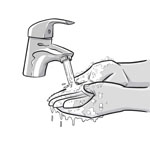
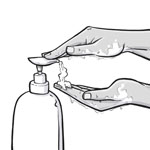

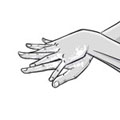
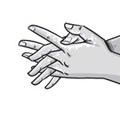
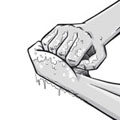
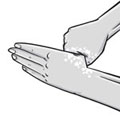
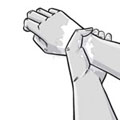
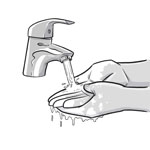
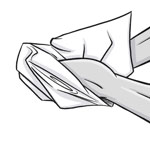
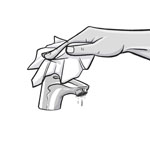
Alcohol-based antiseptic
In cases where you cannot wash your hands with soap and water, you can use antiseptic products, which are effective in eliminating germs. Antiseptics are available in the form of gels, liquids, and foams.
Choose a product containing at least 60% alcohol. Here are some basic guidelines to using antiseptics effectively:
- Make sure your hands are dry before applying the product to avoid diluting it.
- Use enough to cover your hands.
- Rub the product in, making sure it covers your palms, the backs of your hands, the skin between your fingers, and under your nails.
- Rub your hands together until they are dry.
Other useful tips
- Children often don't scrub for long enough when washing their hands. Try asking them to sing a song that lasts the recommended 20 seconds to make handwashing more fun and effective.
- When someone is sick, it's important to disinfect the objects around them with a bleach solution (1 part bleach to 9 parts water). Bedding and clothing should be washed with ordinary laundry detergent.
- If you have cuts on your skin, it's important to keep them covered at all times, as they are vulnerable to infection.
- Wearing gloves is not the same as washing your hands. It is recommended to wash your hands even after wearing gloves.
- If your skin becomes too dry from repeated use of antiseptic products or frequent handwashing, apply a moisturizer.
For more information:
© Copyright Vigilance Santé
The patient information leaflets are provided by Vigilance Santé Inc. This content is for information purposes only and does not in any manner whatsoever replace the opinion or advice of your health care professional. Always consult a health care professional before making a decision about your medication or treatment.
